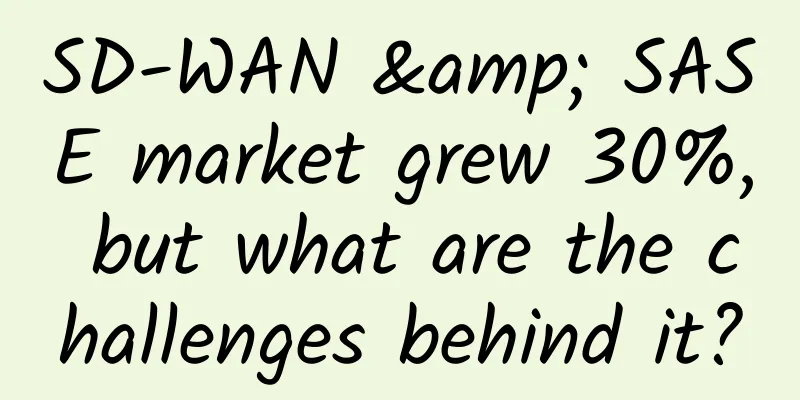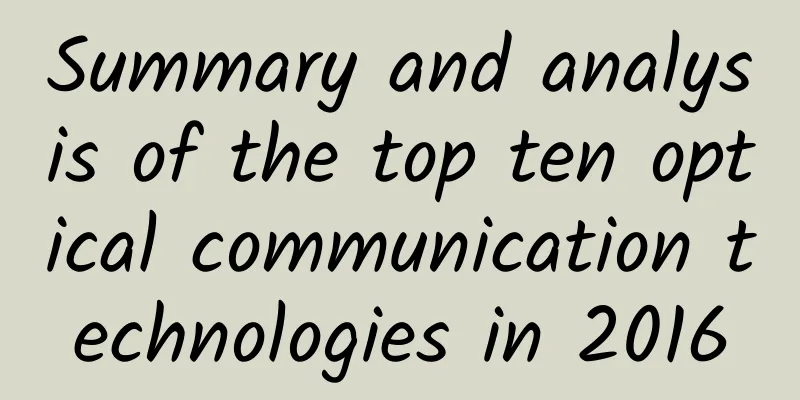SD-WAN & SASE market grew 30%, but what are the challenges behind it?

|
According to the latest "SASE & SD-WAN & SSE Market Research Report" released by Dell'Oro Group, the SSE (Secure Service Edge) market grew 40% year-on-year to more than $800 million in the first quarter of 2022. SSE is a relatively new market that incorporates cloud-centric security features to facilitate secure access to the Web, cloud services, and private applications. SSE forms the security portion of SASE. Within SASE, SSE focuses on unifying all security services, including secure web gateways (SWG), cloud access security brokers (CASB), zero-trust network access (ZTNA), and firewall as a service (FWaaS). The other half of the SASE platform focuses on the simplification and unification of network services, including software-defined wide area networks (SD-WAN), WAN optimization, quality of service (QoS), and other methods to improve routing to cloud applications. "In the age of distributed applications and hybrid work, enterprises are increasingly looking to cloud-delivered security over traditional on-premises solutions," said Mauricio Sanchez, research director for network security, SASE and SD-WAN at Dell'Oro Group. In addition, the report also mentioned the following points:
However, despite the market growth, the intricate challenges surrounding SD-WAN and SASE remain. MEF (Metro Ethernet Forum) interviewed and surveyed 36 experts from 10 service providers and summarized the current problems and challenges in the development of SD-WAN and SASE. Challenge 1: Lack of clear standardization of managed SD-WAN servicesMEF said SD-WAN service providers face challenges with a lack of clear standards and interoperability. Standards organizations such as MEF are working to develop SD-WAN specifications, but service providers have not yet reached a consensus on how to standardize SD-WAN. One vendor's service may not be compatible with another vendor, which poses a challenge to how to integrate services between vendors. SD-WAN challenges include:
Challenge 2: SASE services are also difficult to defineSASE is a relatively new technology and the challenges it faces are comparable to those of SD-WAN, but more complex because the technology is still in the early stages of development. SASE challenges include:
MEF said that although the SD-WAN and SASE markets are still on an upward trend, the challenges brought by the complexity of these two technologies may hinder their development momentum in the future. |
<<: 97% of UK business leaders expect quantum computing to disrupt their industry
>>: What new developments have occurred in the 5G field in the first half of 2022?
Recommend
The roadmap for building a digital China in the next five years has been released to develop seven key industries including cloud computing
[[385931]] The draft outline of the 14th Five-Yea...
Why 5G needs network slicing and how to implement it
[[189050]] When 5G is widely mentioned, network s...
RackNerd: $39/month-E5-2690/4GB/120GB/5TB/San Jose & Seattle & Dallas, etc.
The tribe has shared a lot of cheap RackNerd VPS ...
Industrial IoT and manufacturing will become one of the largest 5G markets
Private 5G networks are attractive to the largest...
No more worries about network failures: Understand Ethernet interface physical DOWN failures and solutions in one article!
1. Concept of Interface Physical Down The Etherne...
Sharktech private cloud annual payment 50% off as low as $43/month, 8 cores, 16G memory, 500G SSD, 5TB traffic, Los Angeles high defense
We often share information about Sharktech's ...
Huawei and China Telecom jointly release innovative results of "Cloud Network Core Capabilities", leading a new paradigm of strategic cooperation
On March 1, during MWC22 Barcelona, Huawei and ...
Meet challenges and continue to innovate: Cisco Meraki opens a new hybrid office model
In the post-epidemic era, hybrid office has becom...
A thought-provoking report on a major communications failure
Starting at 1:35 a.m. local time on July 2, a lar...
The Ultimate Guide to Ethernet Switch Ports: Identifying and Choosing the Right Port
Ethernet switch port types 1. Ethernet switch por...
BuyVM restocking: 4 data centers in Las Vegas/Luxembourg/New York/Miami, 1Gbps, unlimited traffic, starting at 2 Canadian dollars per month
BuyVM was founded in 2010. It is a company that p...
7 things you need to know to successfully deploy AIOps
From ride-hailing algorithms to customer service ...
5G or WiFi 6? Tips for choosing the best wireless network solution
Over the past five years, IT professionals who fo...
DC9 (CN2 GIA) simple test
Last September, I followed the trend and bought a...
Why 99% of business leaders are paying attention to this issue
Digitalization and the provision of digital servi...





![[Mid-Autumn Festival/National Day] CUBECLOUD: 30% off for Lite series/15% off for Pro series, available in CN2 GIA Hong Kong/CN2 GIA Los Angeles](/upload/images/67cabd66b8264.webp)



